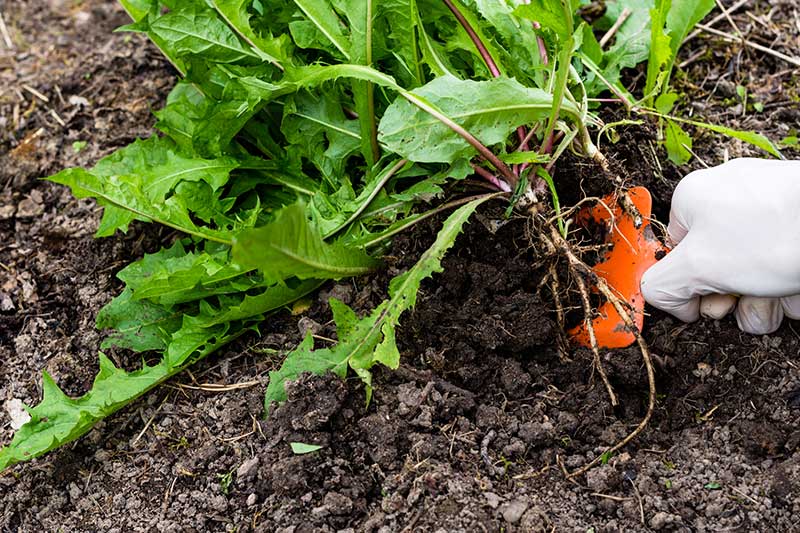How to Kill Dandelions in Your Lawn
Kids love to play with dandelions, but when these weed pests invade your lawn, it's no time to play. Dandelions are tough on lawns and neighbors. They move in to form large, weedy colonies—and make themselves known with bright yellow blooms and prolific seeds that float from lawn to lawn. But with these insights and effective weed controls, you can kill dandelions, reclaim your turf and keep your neighbors happy:
- Why Dandelions Are Persistent Weeds
- How to Control Dandelions Effectively
- How to Help Prevent Dandelions

A single dandelion flower produces prolific wind-borne seed.
Why Dandelions Are Persistent Weeds
Dandelions present challenges for lawn owners on several fronts. These pesky broadleaf weeds are perennials that survive winters to come back larger and more resilient year after year. Survival gets a boost from strong, sturdy taproots that can grow 10 feet deep or more—well out of the reach of dandelion diggers or shovels. As little as an inch of root left behind can generate a new plant.1 If cut off at ground level, dandelions quickly regrow from the crown.
These tenacious weeds also produce large amounts of fluffy, wind-borne seed capable of traveling long distances. An average dandelion plant produces around 15,000 seeds per year.2 Depending on your climate, these weeds may bloom and produce seed year-round. The seeds can germinate without a waiting period and start producing new plants immediately.2

Weeding usually leaves small pieces of dandelion-producing roots behind.
How to Control Dandelions Effectively
Killing and controlling dandelions in your lawn calls for effective control products that deal with existing weeds and new dandelions that arise. Weed & feed fertilizer products do double duty to kill and control broadleaf weeds such as dandelions while they feed your lawn grasses with essential nutrients.
Pennington UltraGreen Weed & Feed 30-0-4, ideal for most established northern and southern lawns, kills existing dandelions and more than 250 other weeds and promotes thick, lush, green grass. Unlike some herbicides that only kill plant parts they touch, this product starts working on contact to kill dandelions all the way to the root tip. Pennington UltraGreen Southern Weed & Feed 30-0-4, suited to most southern lawn grasses and many cool-season grasses as well, kills existing dandelions and controls new weeds for up to three months.
These premium weed & feed products contain iron and fast-acting nitrogen to support quick, rich greening, plus slow-release nitrogen that continues to feed your lawn for up to three months. Some lawn grasses are sensitive to herbicides in weed & feed fertilizers, so always read the product label thoroughly before use and be sure it lists your grass type as approved.
For best results, apply weed & feed fertilizer in spring, once grass and weeds are up and actively growing. Dandelions and other common lawn weeds are most susceptible to treatment when still young and small. Follow-up applications in late summer and or early fall hit these weeds during a second vulnerable stage and help your lawn prepare for winter at the same time.
Never apply weed & feed products or other herbicides to dormant or stressed lawns. When planting lawn seed, wait to apply weed & feed until grass gets established and you mow it at least three times. For newly sodded areas, wait at least three weeks. Once you treat your lawn with weed & feed, wait at least three to four weeks before planting, reseeding or overseeding with new seed.

Dandelions cut at the surface spring back from buds just below ground.
How to Help Prevent Dandelions
As experienced lawn owners know, stopping dandelions is an ongoing task. Even when you eradicate the weeds in your lawn, a soft summer breeze brings more dandelion seeds in. Following good practices for lawn care can help your lawn compete against dandelions and other weeds.
Unlike allergy-provoking ragweed, which doesn't tolerate mowing well, dandelions can stay close to the ground and avoid mower blades. Even so, regular mowing at the recommended height for your grass type helps your lawn stay healthy and vigorous. Regular watering and fertilization also help keep your lawn competitive against invading weeds. Soil amendments such as lime to restore balance to soil pH or gypsum to relieve compaction enhance your soil and promote better grass and root growth.
When dandelions invade your lawn, you can take back your turf with quick action and effective controls. Pennington is here with timely, expert tips and premium lawn and garden products to help you conquer dandelions and enjoy the thick, lush, beautiful lawn you envision.
Always read product labels thoroughly and follow instructions, including guidelines for treatable grasses and application rates.
Pennington with design is a registered trademark of Pennington Seed, Inc.
UltraGreen is a registered trademark of Central Garden & Pet Company.
Sources:
1. D. Hourdajian, "Introduced Species Summary Project: Dandelion (Taraxacum Officinale)," Columbia University, November 2006.
2. Michigan State University Department of Plant, Soil and Microbial Sciences, "Dandelion," Michigan State University.





